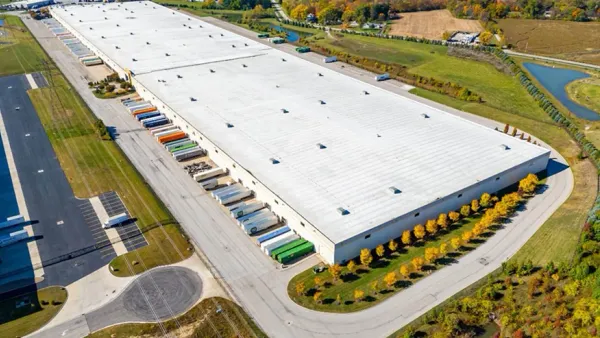This is Patent Pending. Supply chain-related patent applications are published every day and this is where we'll talk about the ones that could have the biggest impact on the supply chain and the ones that challenge the norm. We want to give you an idea of where supply chains are heading and what the industry is thinking. Read the previous issue here.
When your inventory lives in a simulation

Determining the best fulfillment option for a given product isn't easy for a large, big-box retailer that will have any given product in dozens — or even hundreds — of locations. How does the company know it's fulfilling an order in the best and most efficient way?
The answer typically lies in mathematical modeling that relies on data from variables, such as previous orders, store staffing and inventory levels. But in a patent application published last month, Target laid out a plan for a system that uses a simulation engine to run through multiple fulfillment options before picking the best one.
The system that Target envisions is not just for optimizing the interior of the warehouse — it focuses on "the entire supply chain," the patent reads. And Target underscored why this is important, noting that the decisions a company makes at the warehouse level translate through the rest of the supply chain. What's best for the warehouse is not always best for the store, it said.
"For instance, it may be more efficient from a warehousing perspective to pack pallets that are distributed to a store as full as possible," the patent reads. "However, this may make the store operations less efficient when the pallet is packed with goods that have product placement locations scattered about different locations."
And so, Target outlined a plan for a system that takes the entire supply chain, and multiple options for fullfiling an order, into consideration:
- The system starts by receiving order information that could include one or more products that need to be transported from a warehouse to a store or residence. The orders are added to an order pool.
- An instruction engine then determines the policies in place that would allow for the product to be delivered. This includes grouping orders, routing in warehouses, sorting units into containers, loading to containers onto vehicles and other tasks.
- Instructions for how to fulfill an order can then be used in one of two ways: In real life or in the simulation.
- If the instructions are used for simulation, then the system will provide feedback on how long the process took, what resources were required and other metrics.
- The measurements and feedback from these simulations can feedback into the system to help it to determine the ideal set of fulfillment steps the company should follow for a given order. It can also change the policies the system uses to assign instructions in the first place.
Read up:
-
Automation upgrades warehouse execution systems to essential status
-
FedEx readies for 'peak on top of peak' with 4 tech investments
We are 95% confident that item is ... not in stock

An operation that runs on using a perpetual inventory system relies on real-time, point-of-sale data to update its inventory levels. And in a patent application published this month, Walmart outlined its plan to optimize the perpetual inventory values used to track product availability, which the retailer noted sometimes "become inaccurate."
To deal with these inaccuracies, Walmart is looking for a way to keep these values in line with reality, because they're used for other forecasts.
"For instance, products are sometimes re-ordered based upon PI values," the patent reads. "In another example, an item may need to be retrieved in the store. A store employee (or an autonomous vehicle) may be asked to find an item to satisfy a customer request based on a PI value that indicates that product is present in the store."
If they're wrong, then so are the other processes in which they're used. Stores can adjust these PI levels. But Walmart wants to create a system that helps it to better understand these adjustments. It's solution? Confidence intervals.
The system Walmart envisions in its patent is one that doesn't just rely on point-of-sale data, but shelf availability, backroom binning activity, inventory value, forecast accuracy, sales volume, store manager verifications, store size and other variables.
These inventory values are then used to generate a confidence score, which tells the store the amount of trust associated with making an adjustment to its perpetual inventory levels. The retailer would then tweak or accept its values as determined by the interval.














